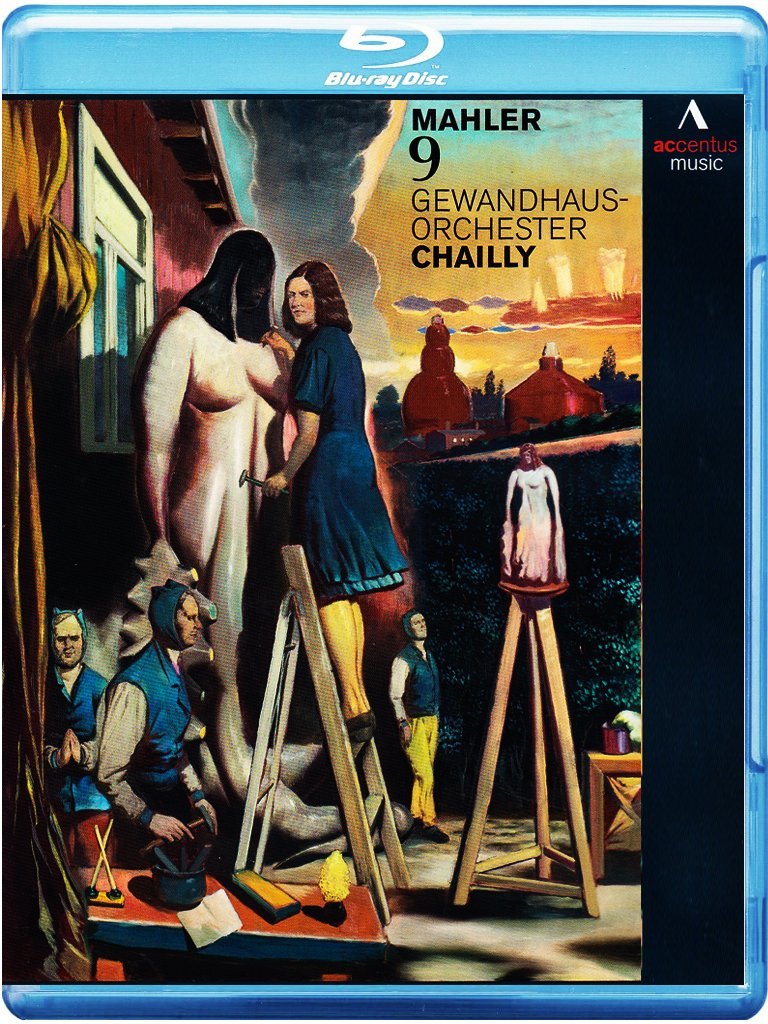Mahler Symphony No. 9 concert. Riccardo Chailly conducts the Gewandhaus Orchestra Leipzig. Directed for TV by Ute Feudel; audio production by Sebastian Braun; produced by Günter Atteln and Paul Smaczny. Released 2014, disc has 5.1 dts-HD Master Audio sound. Grade: C
This title is one of a series of all the Mahler symphonies performed by the Gewandhaus Orchestra under Chailly. Like the rest of the titles in this series, it sports good audio and picture quality. Rob Cowan, writing in the February 2015 Gramophone (page 36) gives his blessing to the performance as well stating "This . . . is Chailly off the leash, liberating the music in a way that is impassioned, positive, fitfully fractured, and often ethereal." But Cowan didn't realize that this title also suffers from poor video content.
TV director Feudel does provide some nice shots. First below we have a fine whole-orchestra view:
Next we have one of the few part-orchestra shots:
Four horns make up the whole horn section for this symphony:
Below is a nice view of some violas. The angle is high enough for you to clearly see the players:
But in the next view, the angle on the cellos is too low:
Below is a good shot of the contrabassoon—it is nicely framed, presenting player and instrument equally:
But the shot below should have been left cut in the editing room:
Next we have one of many, many conductor shots:
Some conductor shots are especially galling. Why would any video director or editor keep this shot in his video?
After viewing the whole symphony we decided that the video of Movement IV, the Adagio, was representative of the whole video. So we did a Wonk Worksheet (not published) on the Adagio.
There are 130 individual clips in the 25 minutes and 4 seconds of music of the Adagio. This results in a decent, slow pace of 11.5 clips per second in Movement IV. However 51 conductor shots make up a staggering 39 percent of the movement's clips. And there are only 17 supershots (large-scale, part-orchestra, and whole-orchestra shots), which makes up a paltry 13 percent of the movement's clips.
HDVDarts.com has established the following rules-of-thumb to identify a Blu-ray with DVDitis:
“A good symphony HDVD should have a slow pace with more than 10 seconds per video clip on average. 20 to 40% of the clips should be large-scale "supershots." Conductor shots should be less (way less really) than 20% of the clips in the video.”
Subject title, unlike the other titles in this series, passes the pace test. But it flunks the conductor and supershot test worse than any other title in the series so far. So we diagnose severe DVDitis. Now for a grade. We reduce the grade from A+ to C for failing the conductor and supershot tests so badly.
OR










